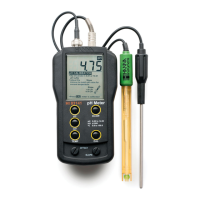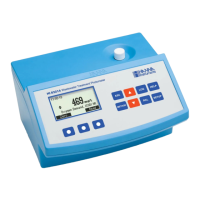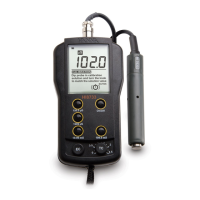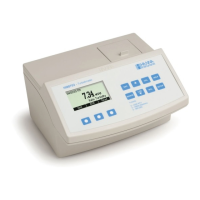14
14
GENERAL TIPS FOR AN ACCURATE MEASUREMENT
5.5. REMOVING AIR BUBBLES
Air bubbles present in the sample will cause erroneous high-turbidity readings.
• To remove air bubbles fill the cuvette with wine sample and tighten the cap. Shake the cuvette
gently to create pressure. Allow the cuvette to stand for a few minutes and gently invert it several
times. Check that no air bubbles are visible, otherwise shake again and repeat the procedure above.
• Alternatively use an ultrasonic bath to degas the wine sample.
5.6. MEASUREMENT TIPS
• For a correct filling of the cuvette: the liquid in the cuvet forms a convexity on the top; the bottom
of this convexity must be at the same level of the 10 mL mark.
• For dosing the Bentocheck reagent, we recommend to use the supplied Hanna automatic pipette
(HI731341 - 1000 µL).
• For correct use of Hanna automatic pipette, please follow the related Instruction Sheet.
• In order to measure the exact volume of bentonite suspension with the 1 mL syringe, push the
plunger completely into the syringe and insert the tip into the solution. Pull the plunger up to
above the 0.0 mL mark. Take out the syringe and clean the outside of the syringe tip. Then, adjust
the plunger to the 0.0 mL mark (the lower edge of the seal must be exactly on the 0.0 mL mark).
Ensure no drops are hanging on the tip of the syringe, if so wipe the tip clean. Next, to add exactly
0.25 mL of bentonite suspension, keep the syringe in vertical position over the cylinder and push
the plunger down until the lower edge of the seal is exactly on the 0.25 mL mark. The exact amount
of 0.25 mL has now been added to the cylinder, even if the tip still contains some solution. Repeat
the entire procedure to measure 0.50 mL, 0.75 mL and 1 mL of bentonite suspension.
or
0.25 mL
0.50 mL
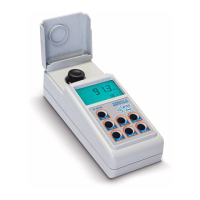
